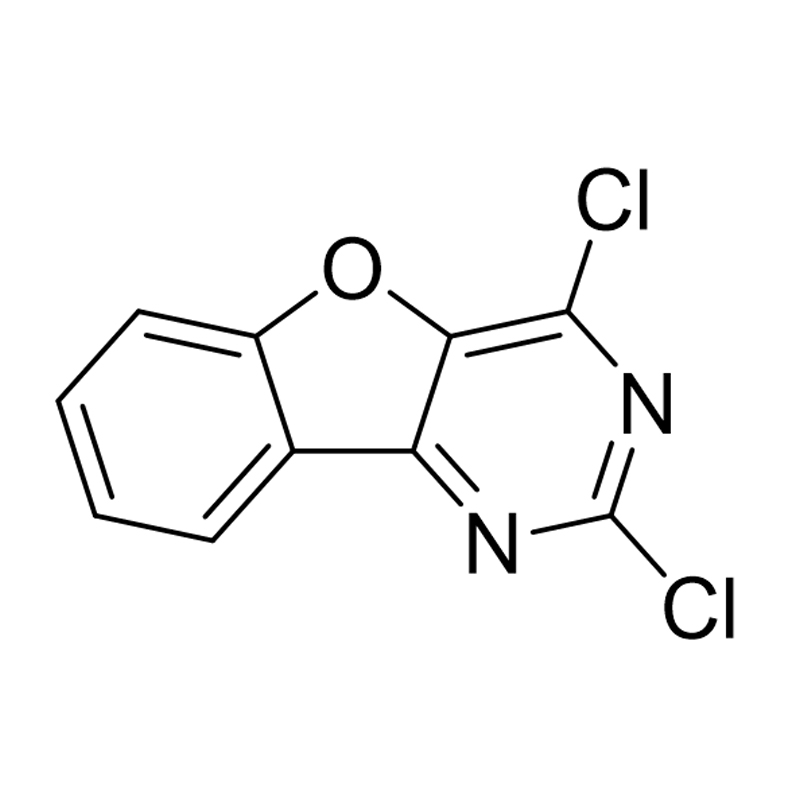How Are Naphthalene Derivatives Used in Surfactant Production?
Nov 14,2025What Role Do Pyrimidine Derivatives Play in Biological Systems?
Nov 07,2025Thiophene Derivatives: Uses, Properties, and Applications
Oct 31,2025How Do Triazine Derivatives Act as Antimicrobial or Antifungal Agents?
Oct 24,2025What Makes Carbazole Derivatives Chemically Stable?
Oct 17,2025Pyrimidine Derivatives occupy a foundational role in the chemistry of life. They form part of the molecular framework of genetic material, contribute to essential biochemical reactions, and serve as the structural basis for many therapeutic agents. From the DNA that encodes genetic information to drugs that combat viral infections and cancer, Pyrimidine Derivatives are deeply woven into both natural and applied biological systems.
Pyrimidine is a six-membered aromatic heterocycle composed of four carbon atoms and two nitrogen atoms at positions 1 and 3. It is one of the simplest nitrogen-containing rings in organic chemistry, yet its derivatives play critical roles in living organisms.
Pyrimidine Derivatives refer to compounds derived from the pyrimidine ring through various substitutions or modifications. These derivatives include naturally occurring molecules such as cytosine, thymine, and uracil—the very bases that make up DNA and RNA—as well as synthetic compounds used in pharmaceuticals, pesticides, and biochemical research.
The presence of nitrogen atoms in the pyrimidine ring allows these derivatives to participate in hydrogen bonding, which is essential for their biological functions. This property is especially important in the pairing of nucleotide bases within DNA and RNA strands.
Perhaps the most fundamental role of Pyrimidine Derivatives in biology is their contribution to the structure and function of nucleic acids. Three key pyrimidine bases—cytosine ©, thymine (T), and uracil (U)—are integral to the genetic code.
The ability of Pyrimidine Derivatives to form specific and stable hydrogen bonds makes them indispensable to the integrity of genetic material. Without these interactions, the double-helical structure of DNA would not exist, and the mechanisms of heredity would be impossible.
Beyond genetic coding, Pyrimidine Derivatives are vital to cellular metabolism. Nucleotides derived from pyrimidines—such as cytidine triphosphate (CTP) and uridine triphosphate (UTP)—play key roles in energy transfer and biosynthesis.
These molecules function similarly to adenosine triphosphate (ATP) by acting as energy carriers, but they have specialized functions within certain metabolic pathways. This diversity underscores the biochemical versatility of Pyrimidine Derivatives.
Pyrimidine Derivatives also contribute to enzyme activity and regulation. Certain coenzymes, which assist enzymes in catalyzing reactions, contain pyrimidine structures. For example:
These examples demonstrate how Pyrimidine Derivatives extend beyond nucleic acids, participating in diverse metabolic functions essential to life.

Cells possess intricate pathways for synthesizing and recycling Pyrimidine Derivatives. There are two main metabolic routes: de novo synthesis and the salvage pathway.
Disruptions in pyrimidine metabolism can lead to metabolic disorders or diseases. For example, abnormalities in thymidylate synthase—an enzyme involved in thymidine synthesis—can result in DNA replication errors, contributing to cancer development. Understanding these pathways is therefore crucial in both basic biology and medical research.
The biological importance of Pyrimidine Derivatives has inspired their extensive use in pharmaceutical development. Many synthetic derivatives are designed to mimic or interfere with natural pyrimidine functions, providing therapeutic benefits.
Drugs such as zidovudine (AZT) and lamivudine (3TC) are nucleoside analogs of pyrimidine bases. They inhibit viral replication by incorporating themselves into viral DNA or RNA chains, effectively halting the replication of viruses like HIV and hepatitis B.
Chemotherapeutic agents like 5-fluorouracil (5-FU) are Pyrimidine Derivatives that disrupt DNA synthesis in rapidly dividing cancer cells. 5-FU inhibits thymidylate synthase, an enzyme critical for producing thymidine nucleotides, thereby preventing tumor growth.
Some Pyrimidine Derivatives exhibit antibacterial and anti-inflammatory properties, expanding their applications beyond virology and oncology. Research continues to explore novel pyrimidine-based compounds that can target microbial resistance and inflammatory pathways.
The adaptability of the pyrimidine scaffold allows chemists to design molecules with tailored properties, enhancing specificity and reducing toxicity.
Pyrimidine Derivatives are not limited to animal biology—they also play key roles in plants and microorganisms.
In plants, pyrimidine nucleotides are involved in chloroplast development, photosynthetic regulation, and stress responses. In microorganisms, they are essential for DNA replication, RNA transcription, and enzyme regulation. Some bacteria produce unique Pyrimidine Derivatives as secondary metabolites with antibiotic or signaling functions, underscoring their ecological and evolutionary importance.
Because Pyrimidine Derivatives are central to many biological processes, they also serve as valuable tools in research and diagnostics. Radiolabeled pyrimidine analogs, for example, are used in imaging studies to track DNA synthesis in tumor cells. Similarly, fluorescent Pyrimidine Derivatives can help visualize nucleic acid interactions or detect mutations at the molecular level.
These applications have become instrumental in fields such as molecular biology, genetics, and pharmacology, enabling scientists to study the inner workings of cells with greater precision.
Recent advances in biotechnology and computational chemistry are expanding the scope of Pyrimidine Derivatives in both biological research and medicine. Machine learning models now assist in predicting the bioactivity and toxicity of new pyrimidine-based compounds. Additionally, green chemistry approaches are being explored to develop environmentally friendly synthesis routes for these compounds.
In medicine, research continues to focus on designing selective inhibitors that target specific enzymes in cancer, viral, or bacterial pathways without harming healthy cells. The potential for Pyrimidine Derivatives to serve as multifunctional therapeutic agents remains vast and promising.
Pyrimidine Derivatives are indispensable components of life. They form the molecular foundation of genetic material, participate in energy metabolism, assist in enzymatic functions, and inspire countless therapeutic innovations. Their chemical versatility allows them to adapt to a wide range of biological and industrial applications.
By understanding the roles of Pyrimidine Derivatives in biological systems, researchers and professionals can continue to harness their potential for scientific discovery and medical advancement. From the microscopic level of cellular metabolism to the macroscopic realm of human health, the impact of these compounds is profound—an enduring testament to the power of chemistry in the living world.
Copyright © 2023 Suzhou Fenghua New Material Technology Co., Ltd. All Rights Reserved.
Custom OLED Material Intermediate Manufacturers

